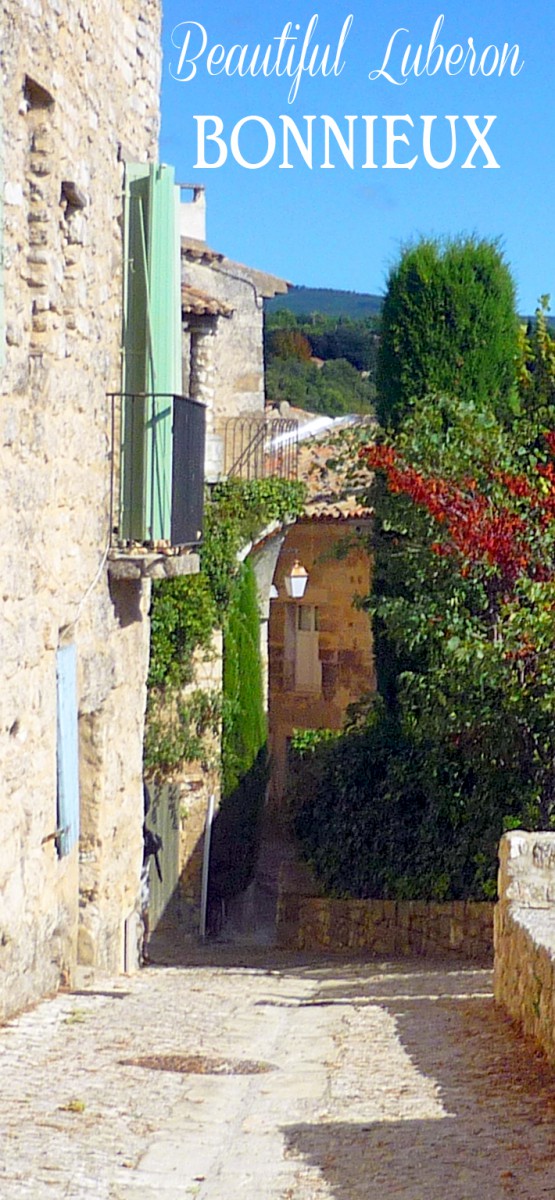For years, I passed through the quaint village of Murs, nestled in the heart of Provence, always in a rush, always on my way to somewhere else. It was just another picturesque spot on the map, glimpsed from the car window – until one crisp mid-October day, I decided it was time to pull over and truly explore this hidden gem.
As the autumn air filled with the scent of fallen leaves and woodsmoke, I parked my car and prepared my camera and video gear. What I found was a village frozen in time, its charming streets whispering stories of centuries past. This wasn't just a stop; it was an immersion into a world I'd too long ignored.
Join me as I share the delightful day I finally got to know Murs through photographs and a video that barely do justice to its serene beauty.
Watch this short video on the Luberon!
Plan your trip
- 🛏 Find the best accommodations in the Luberon on Booking.com
- 🚙 Rent a car in Aix-en-Provence or Marseille-Provence Airport
- 🙋♀️ Get the PASS CÔTE D'AZUR and take your pick from more than 100 amazing experiences!
- 🤩 Visit the beautiful Provençal region of Luberon
- 🚐 Join a 6-hour tour of Lourmarin, Bonnieux, Roussillon, and Gordes by air-conditioned minibus
- 🚘 Discover Provence in a 2CV. Stroll along exceptional roads and enjoy a piece of Luberon all to yourself!
- 🥗 Experience a black truffle hunting tour in a Luberon plantation
- 📚 Read the DK Eyewitness Provence and the Côte d’Azur Travel Guide
- 🗺️ Download the map of the village.
- 🚗 There are several parking spaces in the village. In case of heavy tourist traffic, park near the cemetery.
Murs: A Bit of History
Let’s step back in time as we recall the storied past of Murs.
Ancient Beginnings and Roman Dominance
Nestled amidst the lush Vaucluse mountains in Provence, the quaint village of Murs is a hidden gem steeped in history.
From its origins in the Iron Age, when Ligure tribes built fortified settlements called oppidum, Murs has witnessed the ebb and flow of many eras.
Positioned strategically between Apt and Carpentras, it served as a sentinel watching over the fertile plains of the Calavon River.
By the 1st century BC, Roman peace had rendered the old fortifications obsolete, giving way to prosperous farms that dotted the landscape as the Roman roads connected Murs to burgeoning cities like Apt and Cavaillon.
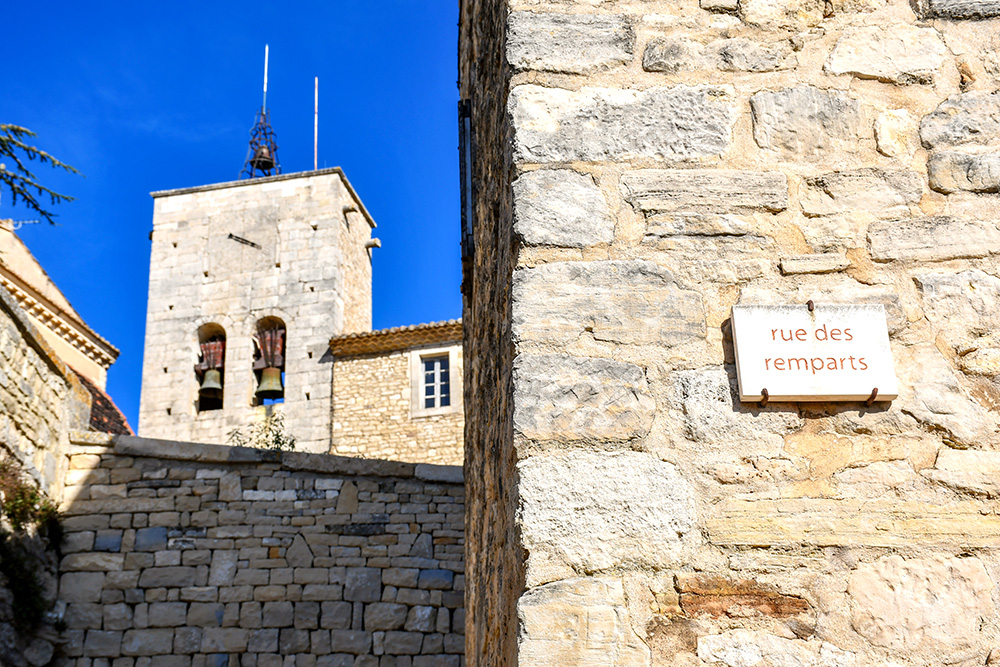
Murs © French Moments
Medieval Turmoil and Religious Shifts
But peace was fleeting.
By the 5th century, barbarian invasions reshaped the region, with successive waves of Burgundians and Franks fortifying the old castrum of Muris once more.
The adoption of Christianity brought new spiritual and architectural developments, with Murs falling under the ecclesiastical influence of the bishops of Carpentras.
The Middle Ages brought more turmoil, with Saracen invasions leaving their mark—evidenced by graves on the castle esplanade—until the locals drove them out in the 10th century.
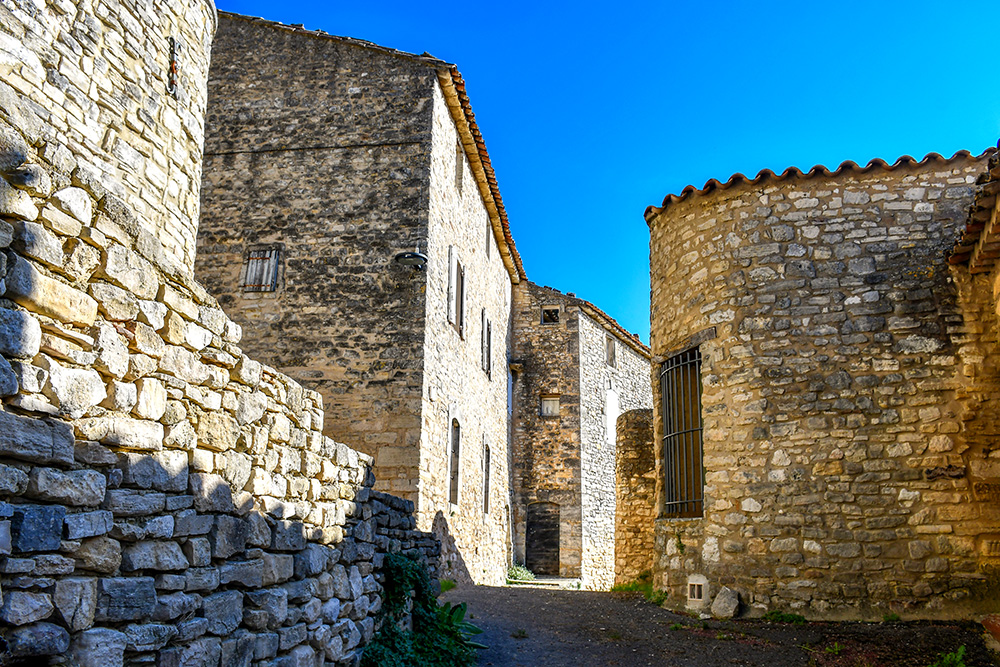
Rue des Remparts © French Moments
Feudal Power and Architectural Flourishing
The subsequent centuries saw the rise of the powerful d’Astouaud family, who controlled the village around the year 1000.
Under their stewardship, Murs experienced significant growth; a majestic donjon was erected in the 12th century, serving as a barracks and a symbol of feudal authority.
The spiritual landscape of Murs was equally dynamic. The 12th century also saw the spread of the Waldensian doctrine—a call for a return to the simplicity of the early church—which left a deep imprint on the community despite the severe repression it faced during the Wars of Religion in the 16th century.
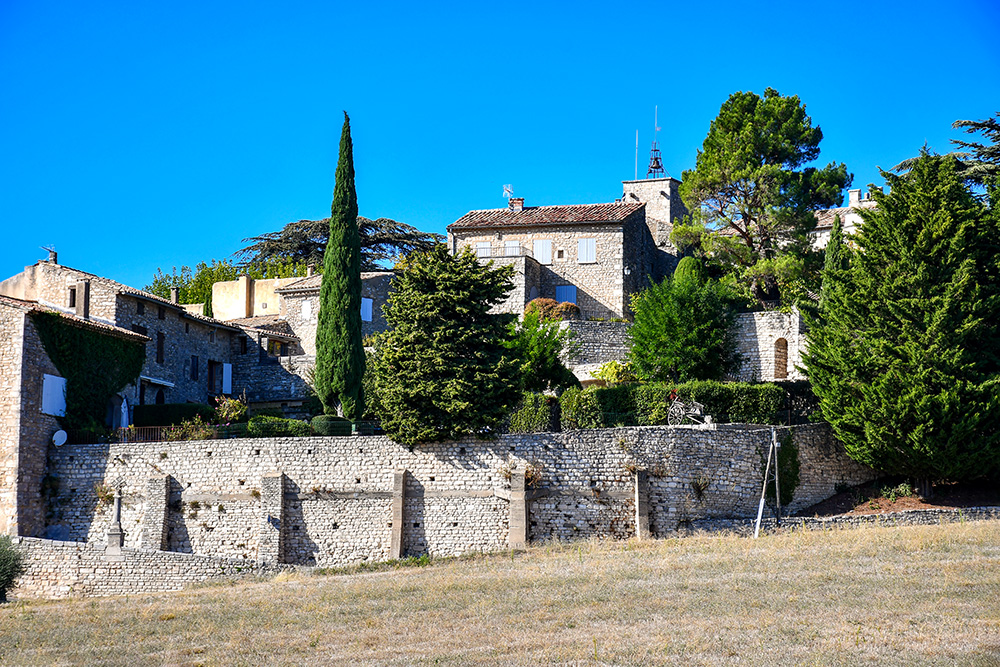
The old part of the village of Murs © French Moments
A Golden Age and Subsequent Decline
The 17th century heralded a golden age for Murs, with most of the village's stone houses being constructed, bearing dates etched on their lintels.
The community thrived, enjoying communal bread ovens and a free washhouse, symbols of a self-sufficient rural life.
However, the 18th century brought hardship with the devastating plague of 1720, followed by the neglect of the village by its lords who preferred the comforts of Carpentras.
The French Revolution further severed old ties, with the last lord of Murs dying in prison in 1794.
Revival and Preservation
The village gradually declined until the mid-20th century when a revival effort led by local leaders brought new life to its ancient stones.
Today, Murs is a picturesque village that proudly preserves its rich heritage, offering a tranquil retreat into history for all who wander its serene paths.
From Iron Age fortifications to medieval battles and the Renaissance revival, the village of Murs encapsulates the enduring spirit of Provence, making it a captivating destination for history buffs and casual visitors alike.
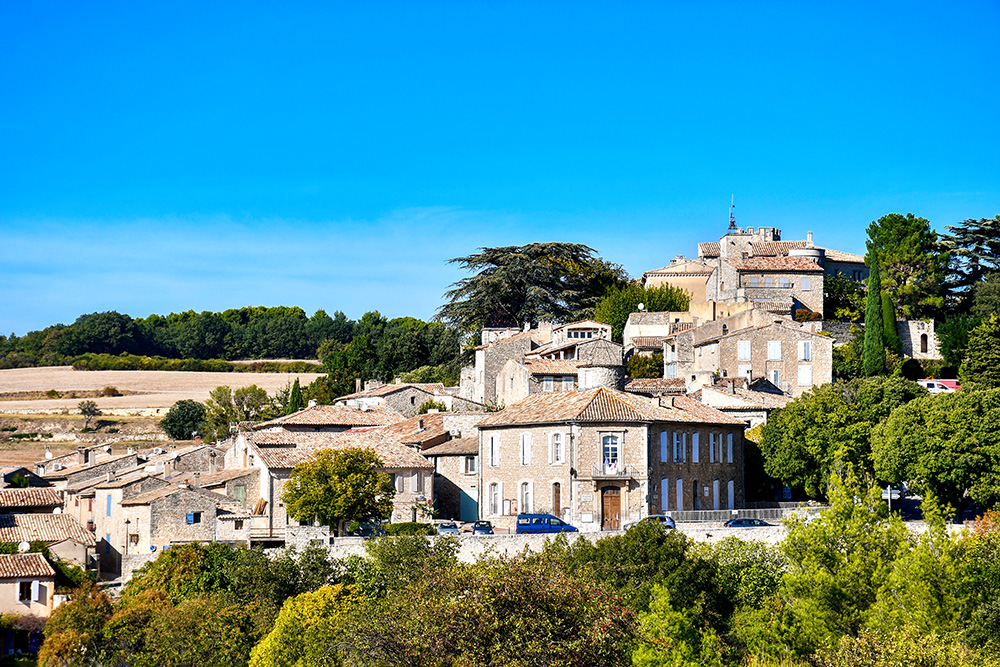
General view of the village © French Moments
Where does the name Murs come from?
The etymology of "Murs" traces back to the Celto-Ligurian tribes who settled in the region in 750 BC.
They left behind piles of stones on the site, the purpose of which is unknown—whether they were settlements or simply stone clearings.
These stones are thought to have given the village its name, Muros.
Unlike some French place names where final consonants are silent, the name of this village is pronounced with both consonants heard at the end [Murs: /myʁs/].
Three French localities bear the name Murs:
- our village, the commune of Murs in the département of Vaucluse [84],
- the commune of Murs in the département of Indre [36], and
- the former commune of Murs, now part of Murs-et-Gélignieux in the département of Ain [01].
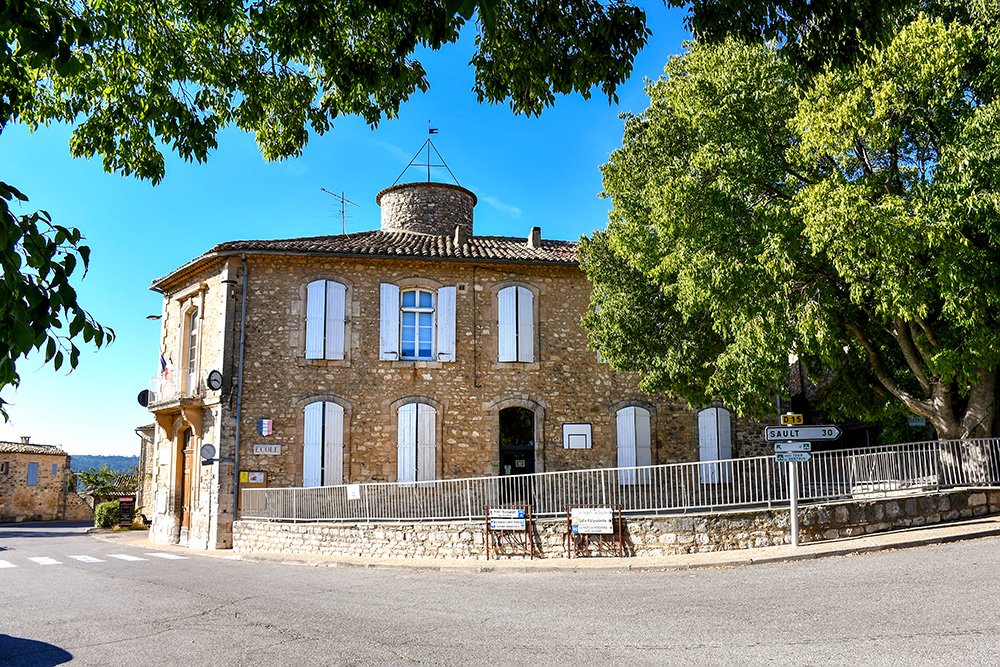
The town hall of Murs © French Moments
The Discovery Guide of Murs
Here's some tourist information to help you explore the Provencal village.
🎦 Check out my guided walk on YouTube to explore Murs with me:
Understanding the Village
Perched at 500 metres within the serene Vaucluse mountains, the village of Murs embodies the quintessence of rural Provence with its scenic beauty and tranquil pace of life.
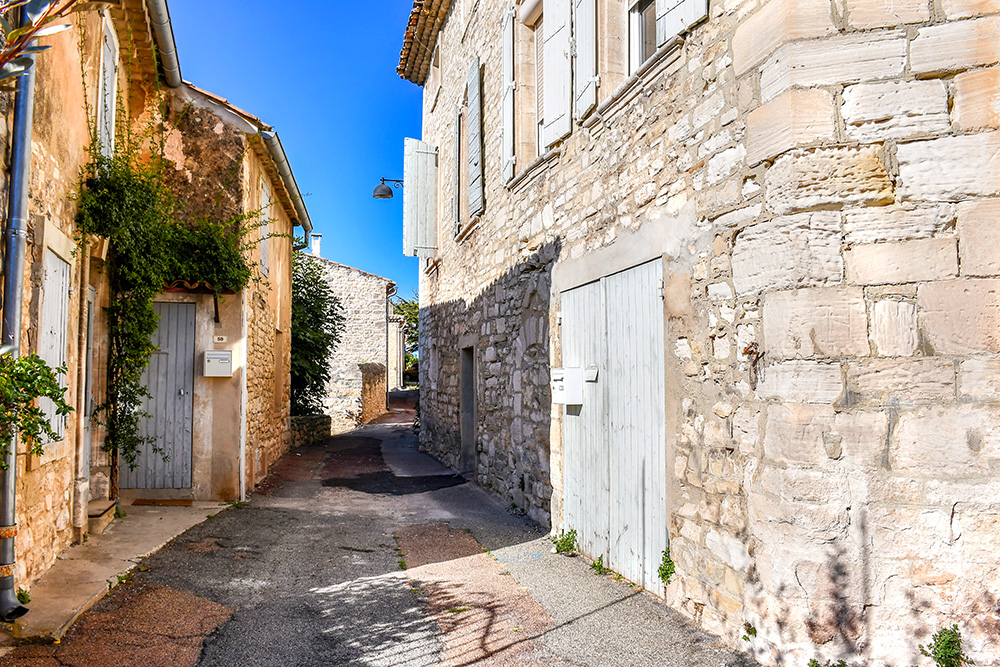
A street in the village © French Moments
This picturesque village (pop. 425) is characterised by narrow, winding streets that ascend gracefully to the historic Place de l’Église, the former heart of the community.
Along these cobblestone paths, stone houses from the 17th century stand testament to Murs' rich history, with their façades weathered yet charming, leading up to the stately Romanesque church and a privately owned castle that dominates the village skyline.
The wise men of Murs
The former manager of the Regain Youth Hostel in Saignon rightly wrote:
"Painters have chosen Gordes and Roussillon, writers Lourmarin, the wise have chosen Murs and wisely kept silent about it."
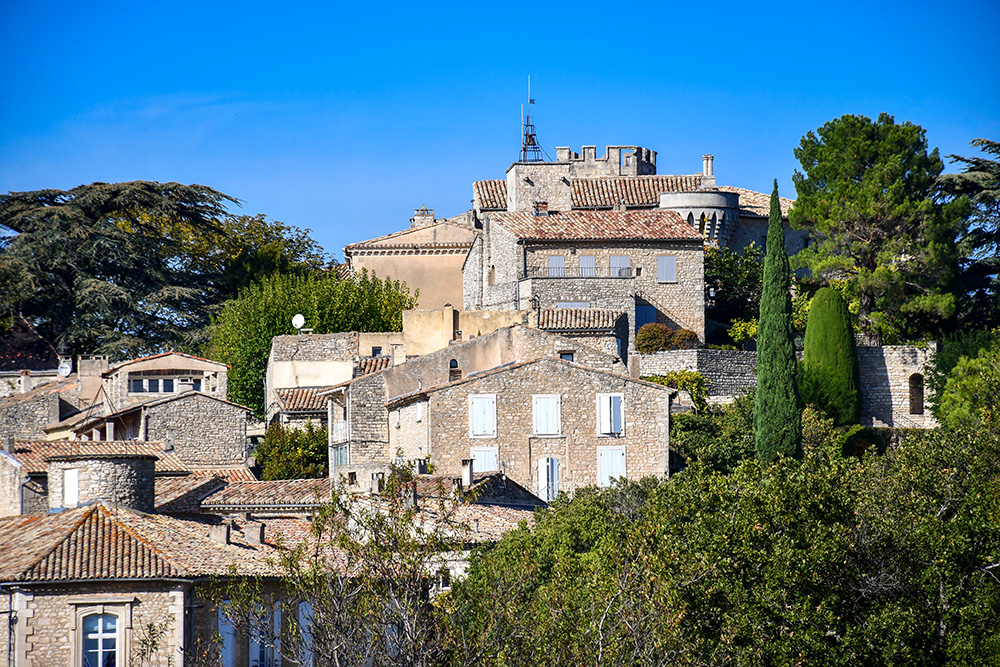
Murs © French Moments
Indeed, nestled in the shade of its hills and away from tourist routes, Murs watches trends and eras pass by without pretence and remains an authentic rural commune.
The natural environment
The natural environment around Murs is lush and verdant, dominated by rolling hills and dense forests typical of the Vaucluse region.
The landscape is punctuated with orchards of cherry and apricot trees alongside fields of golden cereals and vibrant lavender, painting a picture of rural productivity that has sustained the community through the centuries.
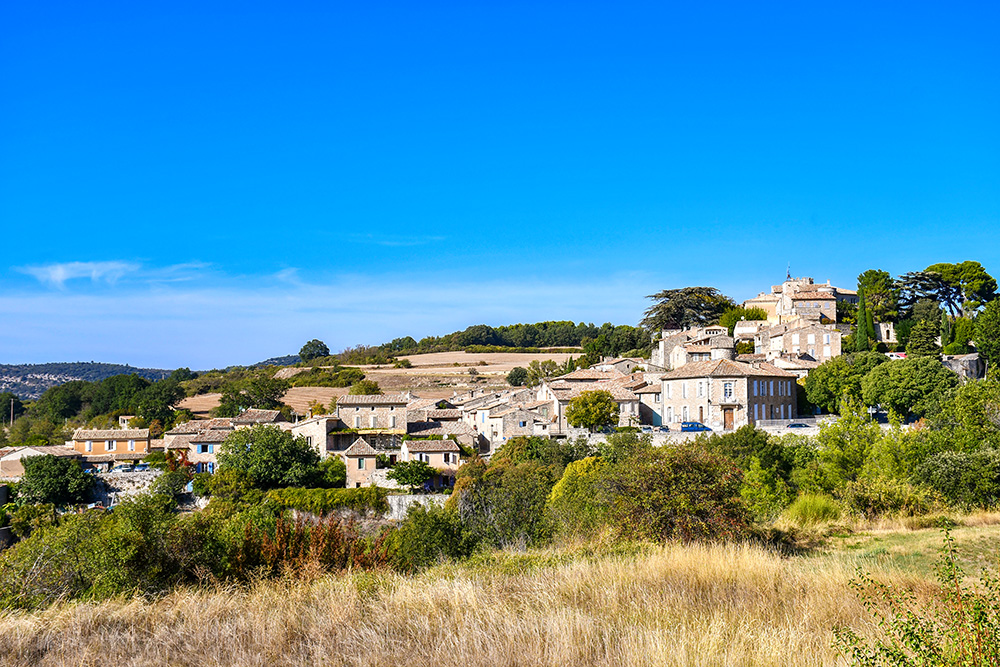
The village of Murs © French Moments
Agriculture remains a cornerstone of the local economy, with these crops providing not only a livelihood for the residents but also a draw for tourists who visit to experience the idyllic Provencal countryside.
The local economic activity
Economically, Murs benefits from a modest yet steady influx of tourism, which complements its agricultural base.
Visitors are drawn to the village for its historical architecture, peaceful natural setting, and traditional way of life.
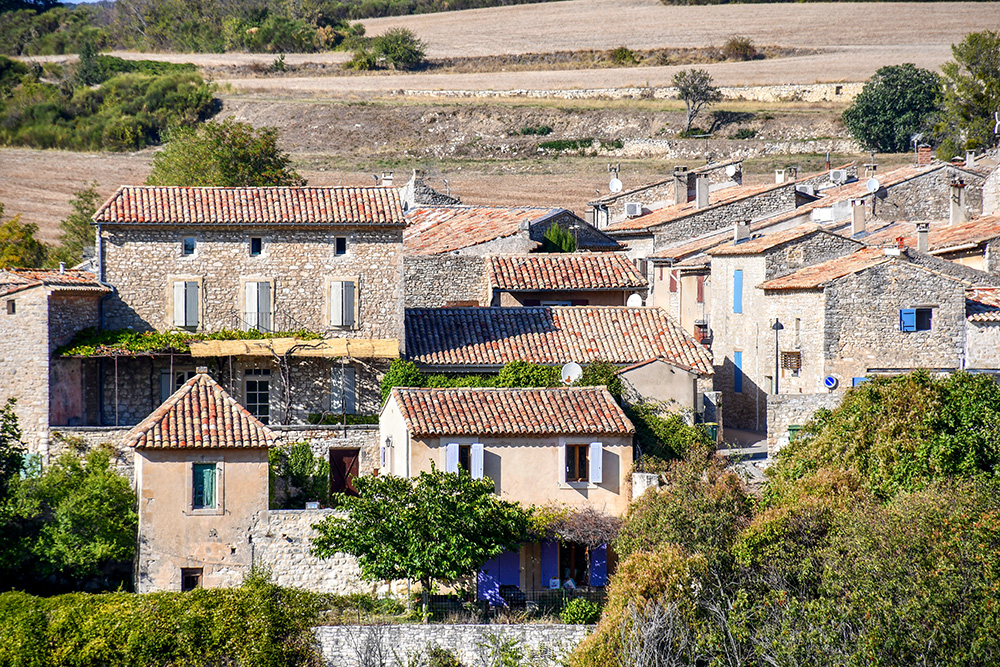
General view of the village © French Moments
The local community has capitalised on this interest by maintaining the village’s rustic charm and promoting sustainable tourism that respects and preserves its cultural heritage and natural resources.
Murs, with its timeless appeal and commitment to preserving its past while embracing the present, offers a unique glimpse into the enduring spirit of rural France.
A Guide of the Village of Murs
Let's begin our exploration of Murs at the Place de la Mairie, located in the southern part of the village, on the road leading from Apt.
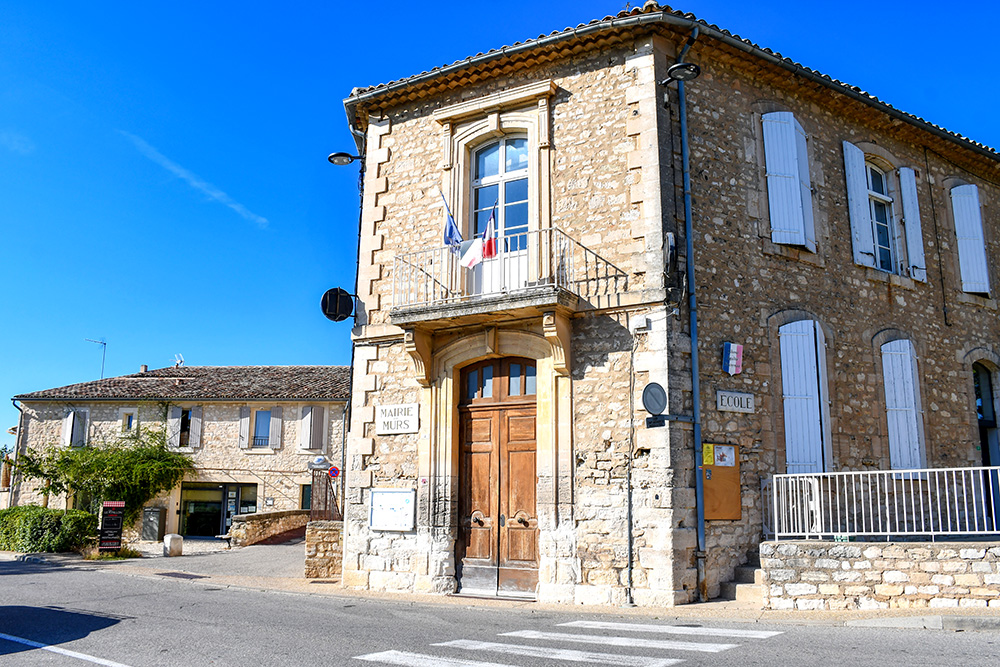
The Town-Hall of Murs © French Moments
Ascend through this ancient village to the Romanesque church and the castle, starting with the Rue du Brave Crillon, which opens to the left of the town hall.
The stone houses of Murs
Murs is more of a village with charming stone facades that exude a wholesome rural ambience, contrasting with the sometimes artificial appearance of some fashionable Luberon villages that have become victims of their own success.
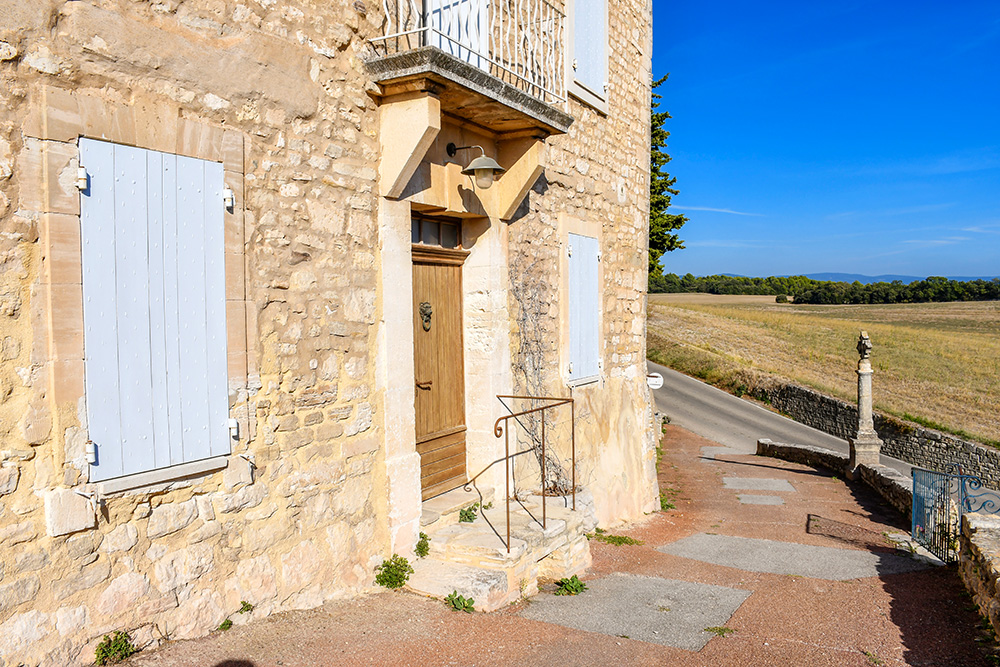
Stoned-houses in Murs © French Moments
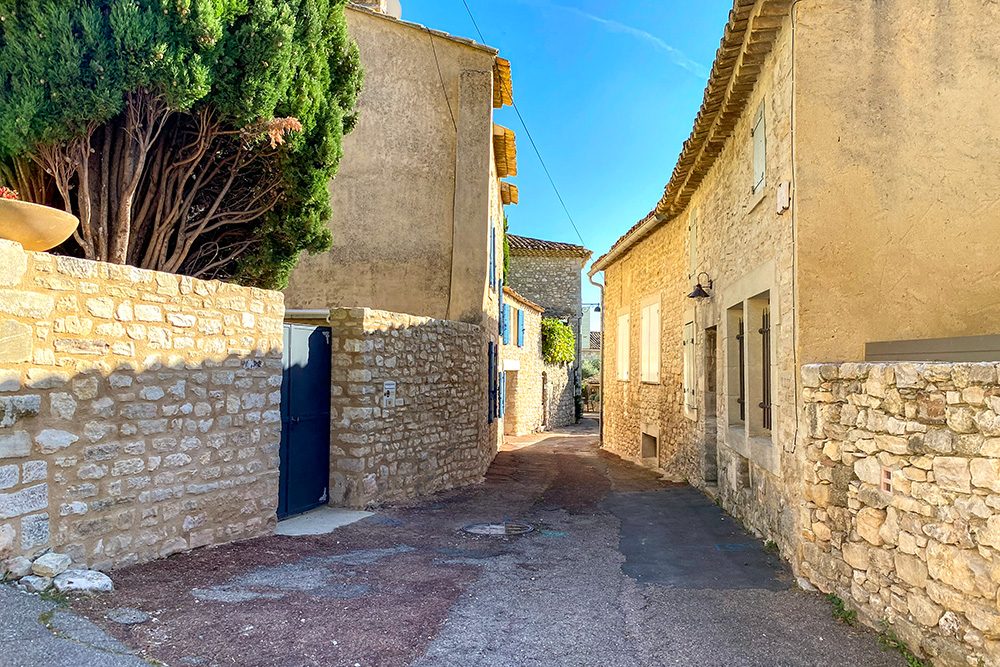
A winding street © French Moments
Most houses date back to the 17th century, a period of prosperity for the village of Murs.
The completion dates of these buildings can be seen on their lintels.
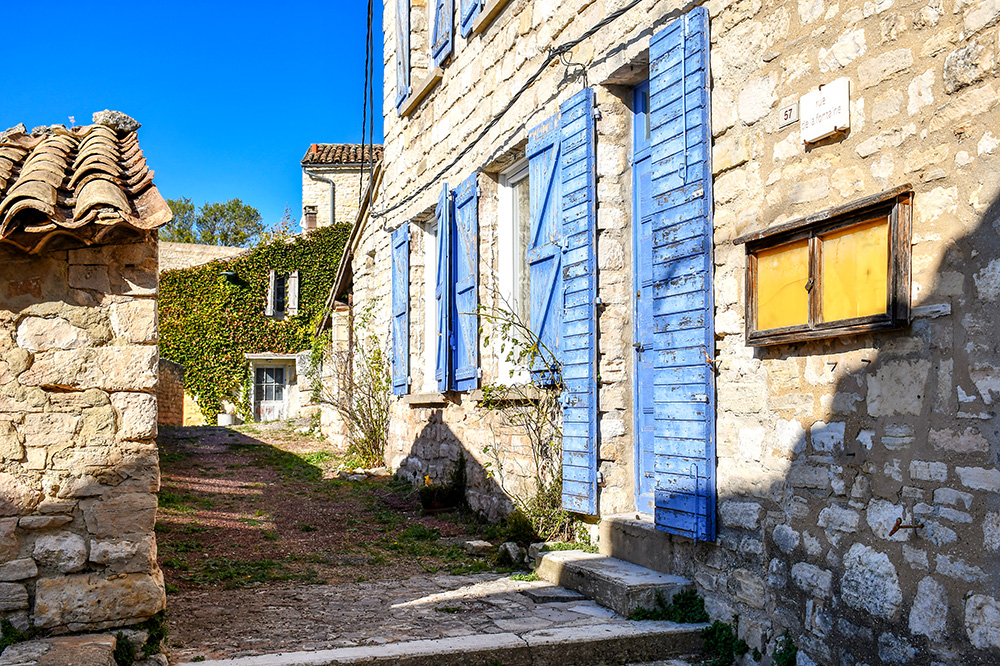
A street in the village © French Moments
Place de l'Église
Continue straight to the Place des Vaudois and take the Montée des Jardins up to the Place de l’Église.
The square is the former heart of the village. It is now a tranquil square away from the roads.
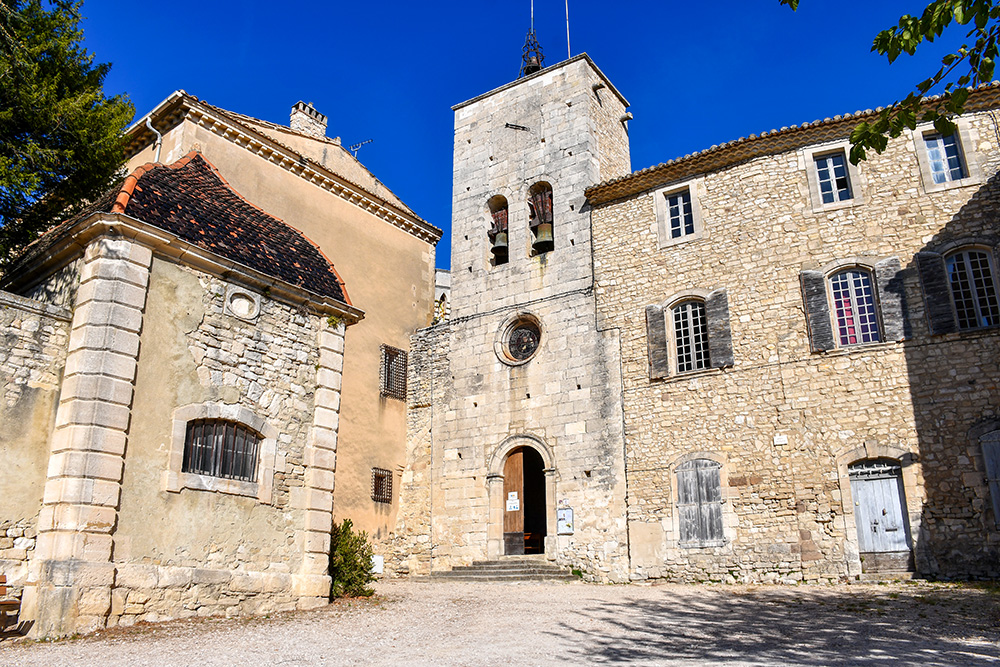
Place de l'Eglise © French Moments
The Place de l’Église provides access to four significant buildings in Murs, from left to right:
- the castle (le château),
- the church (l'église Saint-Loup),
- the clergy house (la Cure),
- and the birthplace house of Crillon (la Maison Crillon).
The parish church
The Saint-Loup Church appears squeezed between the castle and the clergy house.
Consequently, its large square bell tower is as wide as its facade.
This gives it more the appearance of a fortified gateway than a sanctuary.
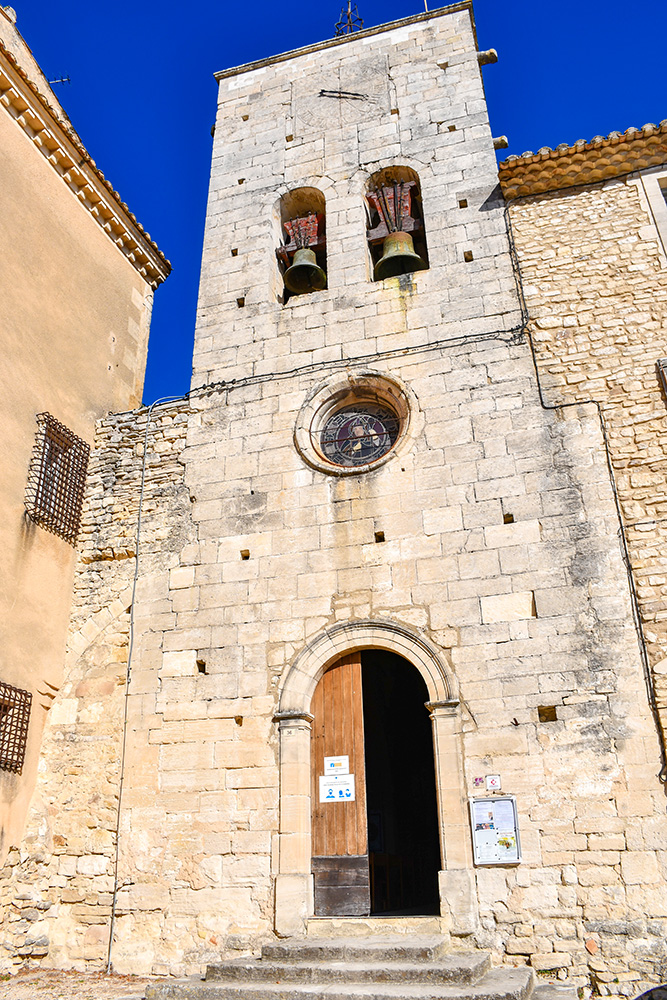
The "squeezed" facade of Eglise Saint-Loup © French Moments
The Romanesque-style church was built in the 12th century.
It was formerly owned by the Abbey of Sénanque and was dedicated to Saint-Loup, a bishop of Troyes during the Hun invasions.
Inside, you can appreciate its pure and austere Romanesque style. It features no ornamentation except for a couple of stained-glass windows.
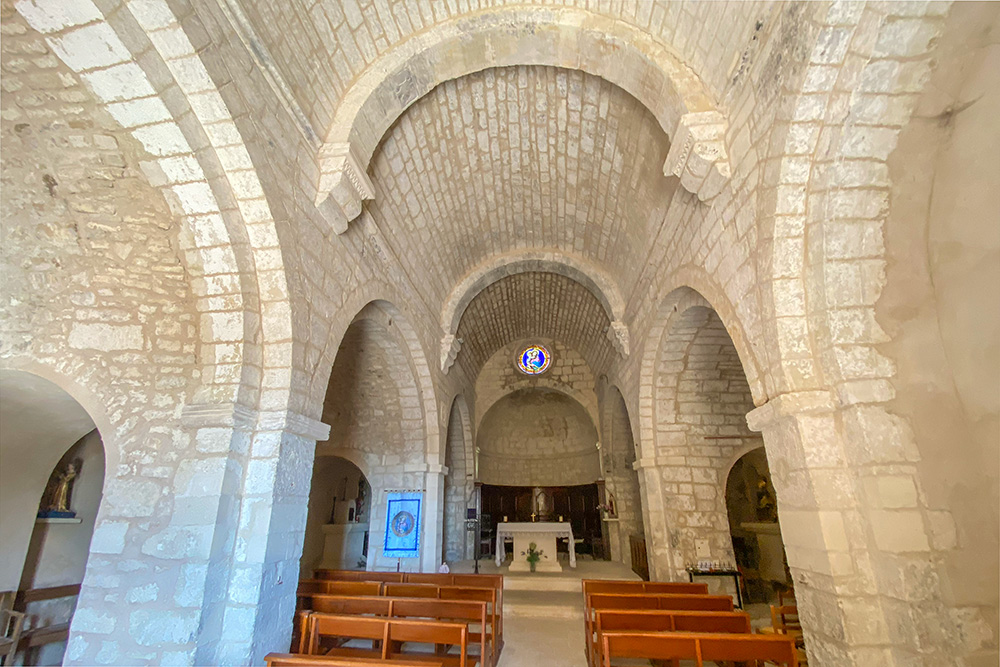
The nave © French Moments
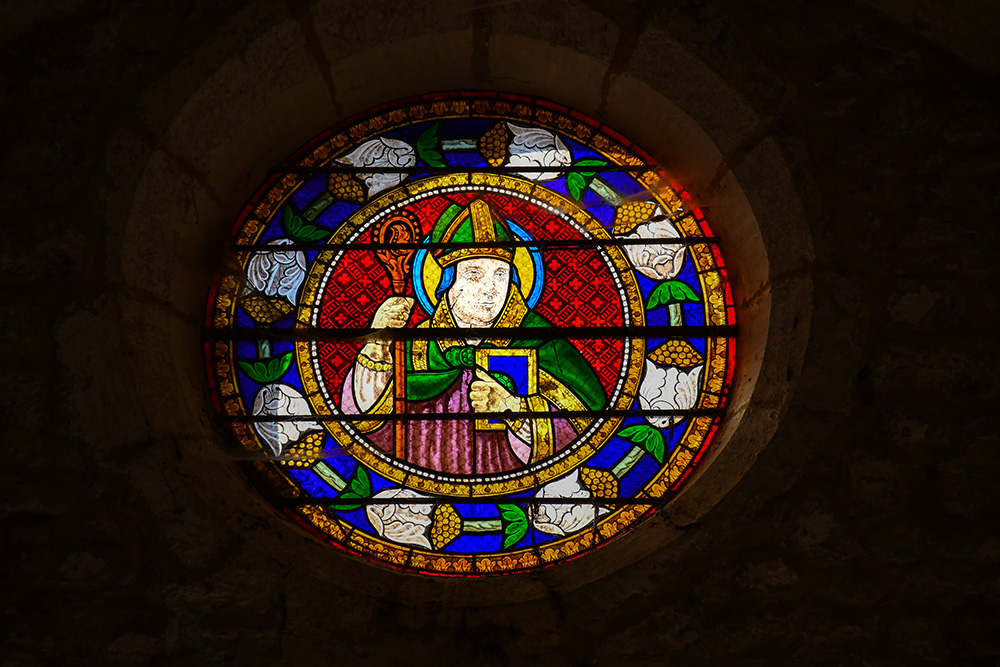
Stained-glass window © French Moments
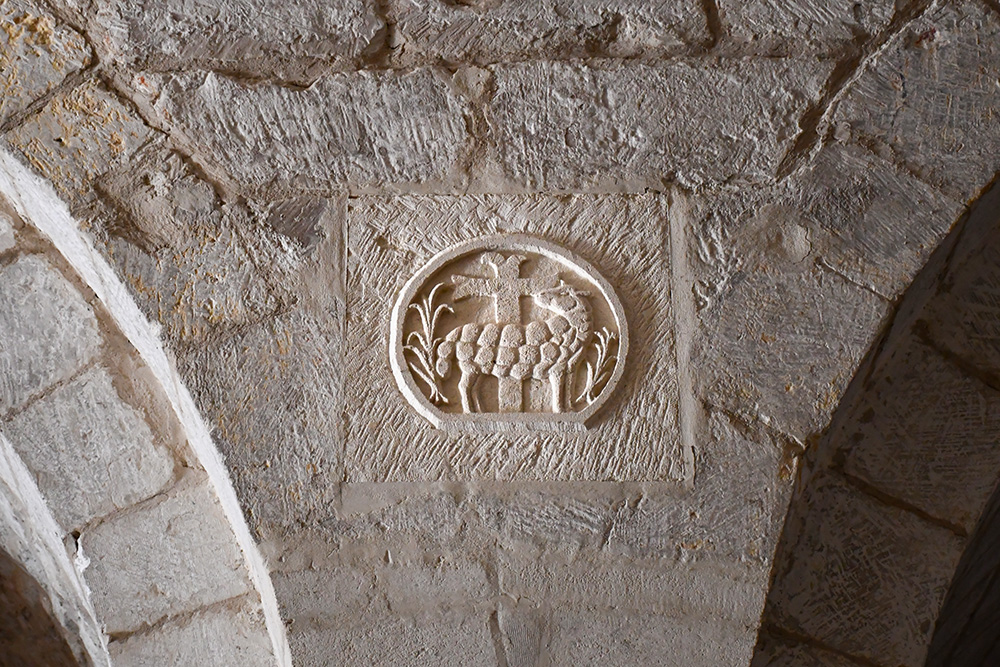
The Lamb of God © French Moments
The church's treasure comprises an 18th-century bust of the saint containing relics of Saint Loup, Saint Lambert, and Saint Andrew the Apostle, an 18th-century censer of which only two other examples exist in France, and a 16th-century processional cross in chiselled silver mounted on a wooden core.
On the roof terrace of the bell tower is a tiny, simple wrought-iron campanile.
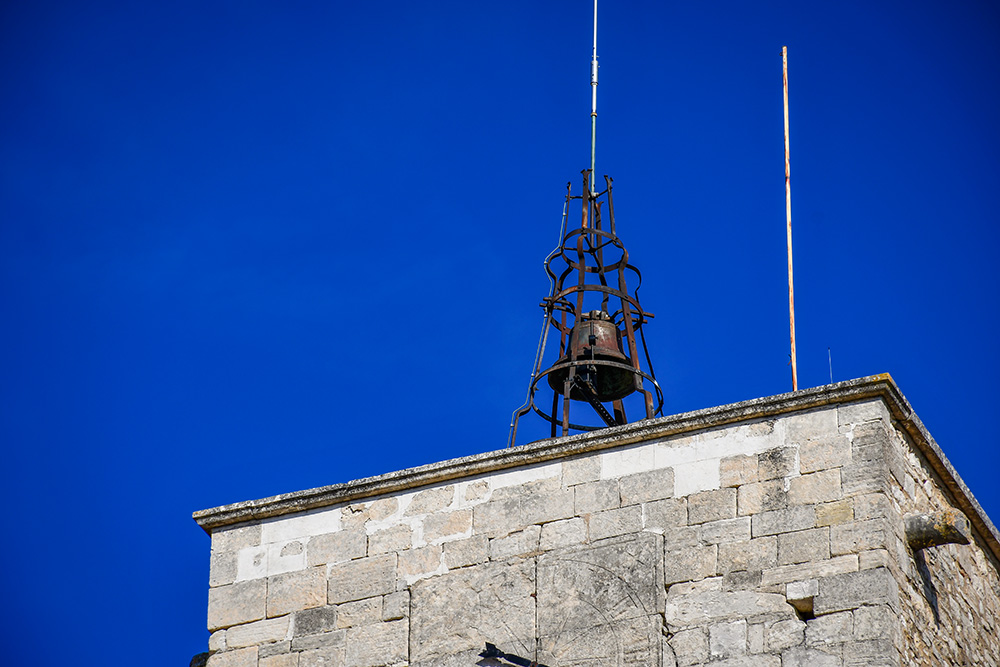
The small campanile of the church © French Moments
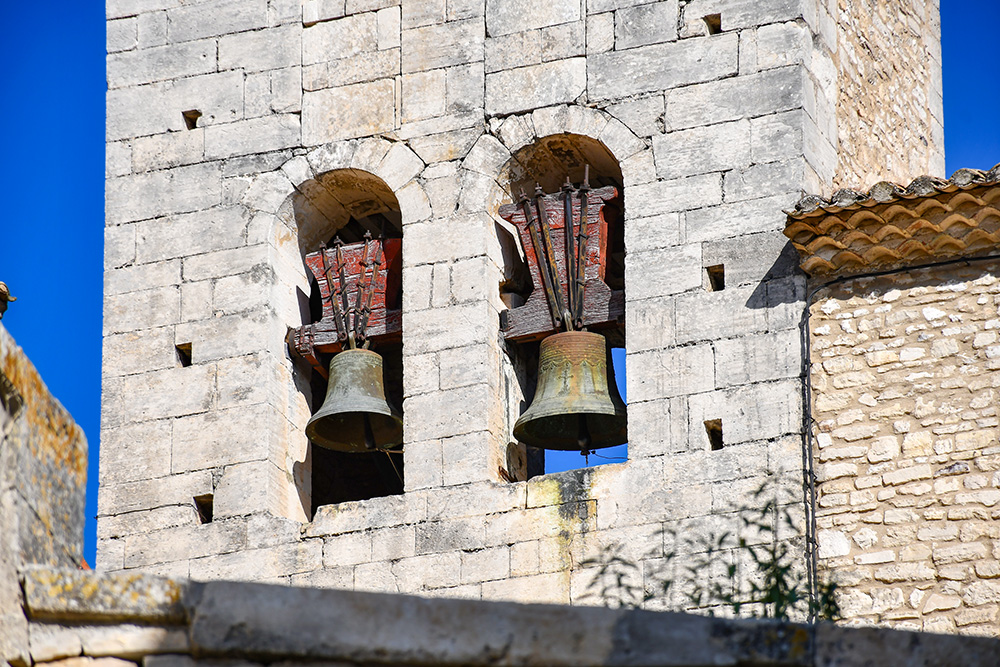
The "squeezed" facade of Eglise Saint-Loup © French Moments
The Crillon House
To the right of the church is the clergy house (la Cure) and then the birthplace house of Crillon.
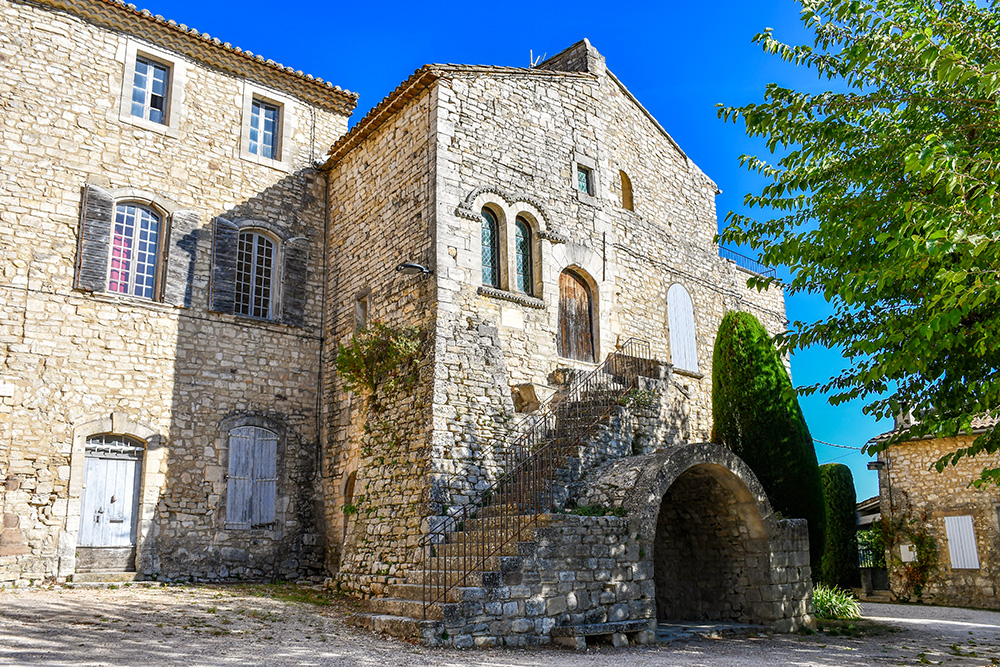
Maison Crillon © French Moments
Murs is particularly famous for being the birthplace of Louis de Balbes de Berton de Crillon, more commonly known by the flattering nickname "Brave Crillon".
Born in Murs in 1541, he pursued an uninterrupted military career, serving successively under Kings Henri II, François II, Charles IX, Henri III, Henri IV, and Louis XIII.
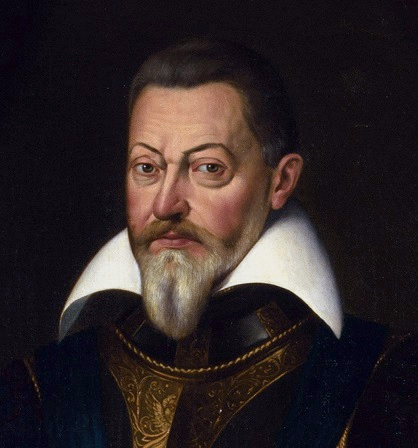
Brave Crillon. Painting on display in Calvet Museum, Avignon
Renowned for his integrity and courage, he was highly regarded by Henri IV, who called him the "world's finest captain".
Crillon died in 1615, leaving his name to a tiny village at the foot of Mont Ventoux and, notably, to a grand hotel in Paris on the Place de la Concorde: the Hôtel de Crillon.
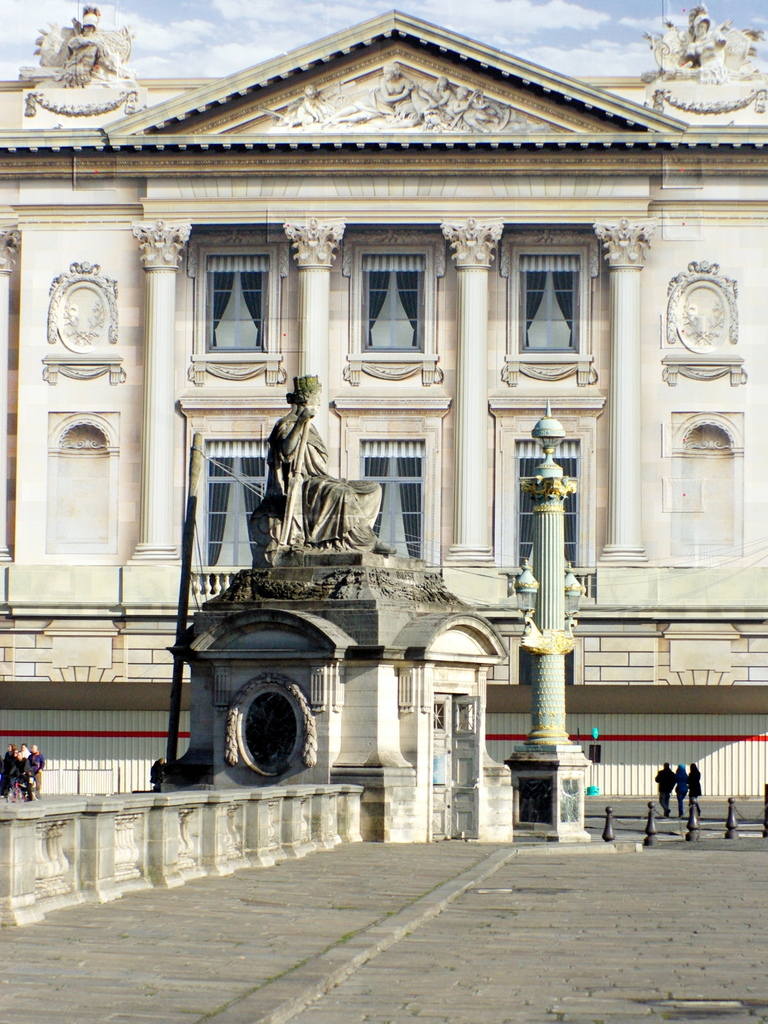
Hotel de Crillon (during works), Place de la Concorde, Paris © French Moments
The Castle of Murs
The castle is the most imposing feature of the village, yet it is private and not open to visitors.
However, you can still admire its monumental gate with wrought iron grillwork, flanked by two small pavilions with glazed tiles.
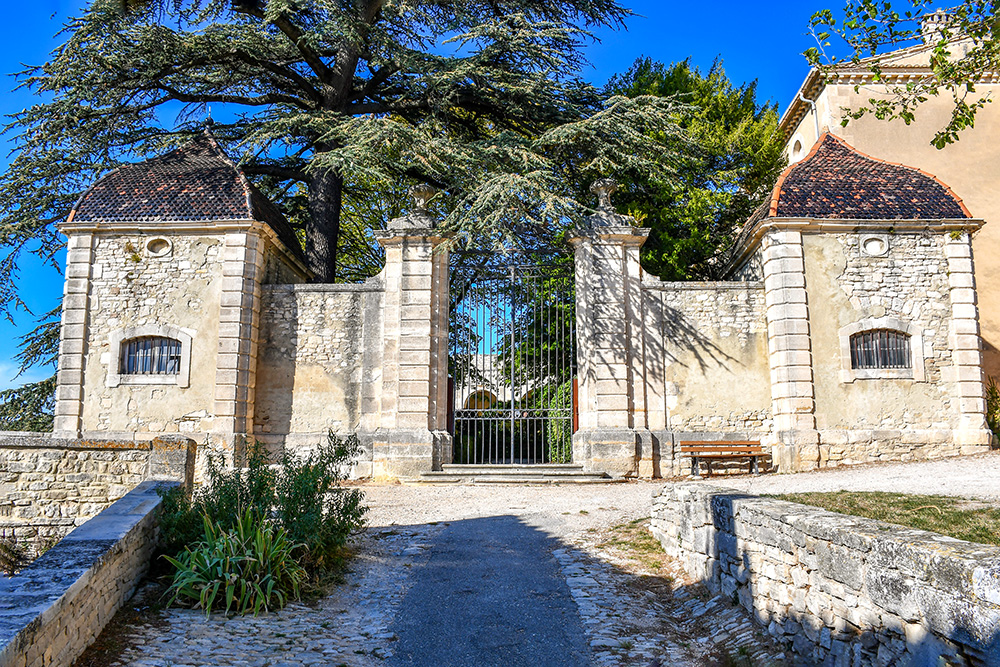
The entrance to the castle © French Moments
Behind the gate, a French-style garden is partially visible.
To get a better view of the castle, you must distance yourself from the village and take either the road to Apt or the one to Sault.
Small heritage
Murs is a village in the Luberon rich in small heritage sites. As you wander through the village streets and its surroundings, you will discover wells, fountains, washhouses, crosses, and oratories, as well as bories (dry stone huts).
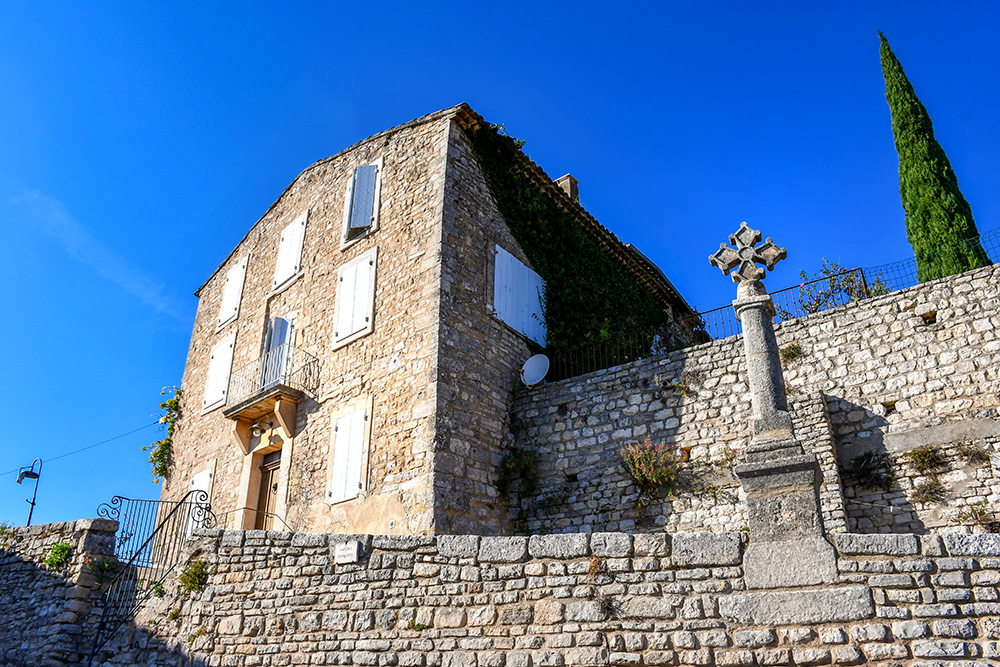
A cross in the village (Rue de l'Église) © French Moments
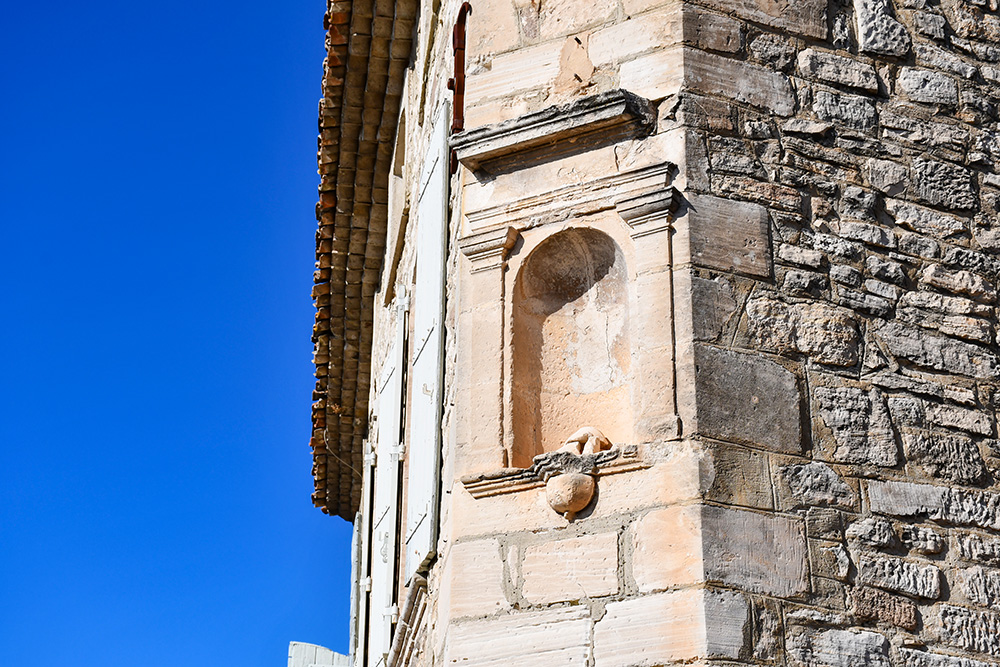
An empty corner niche (Rue du Brave Crillon) © French Moments
The lack of surface water forced the villagers to dig into the rock to reach groundwater.
This accounts for the large number of well-remaining wells and fountains in the village and its hamlets.
Head down the Rue de l’Église then turn left onto the Montée Saint Loup to return to the starting point.
At the southern entrance to the village is a large 18th-century oratory with scrolls.
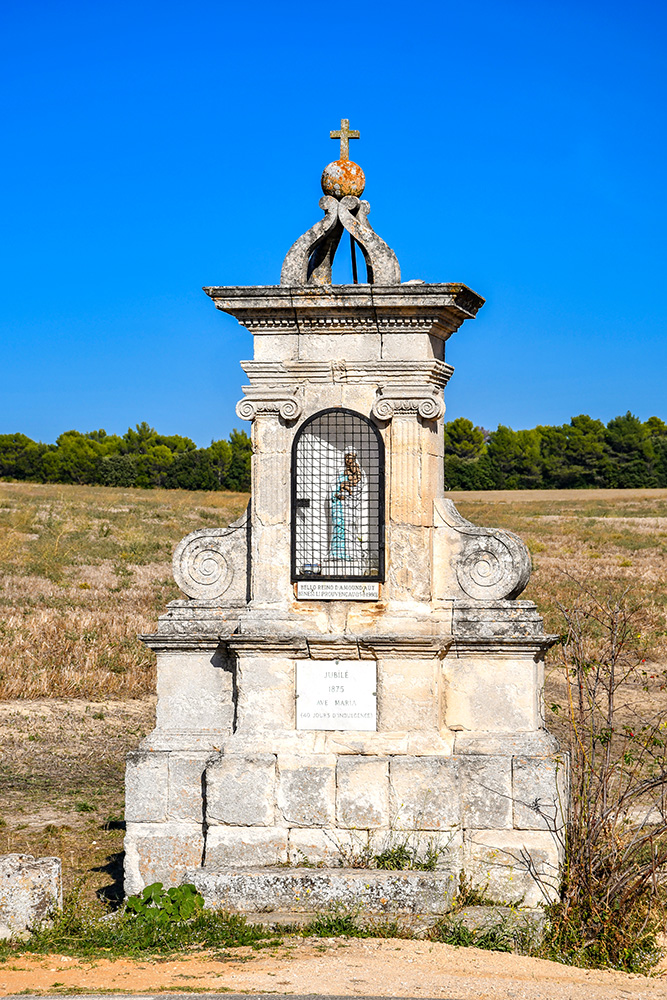
The 18th-century oratory with scrolls at the southern entrance of the village © French Moments
Find out more
Here are some pages from our blog and other websites to find out more about this Provencal destination.
- Discover the hilltop villages of the Luberon
- Explore the neighbouring villages of Joucas and Gordes
- Find out more about Provence-Alpes-Côte d'Azur
- The official tourist office of the area
Where to stay near Murs
Murs and surroundings have a high capacity for holiday accommodation. The commune and its surroundings has hotels, bed and breakfasts (covering all price ranges), estate agencies offering seasonal rentals and gîtes.
Click here to book your accommodation in the Luberon or browse the map below:
What to do in the Luberon
Be inspired by a list of things to do in the Luberon:
Pin Murs on Pinterest
